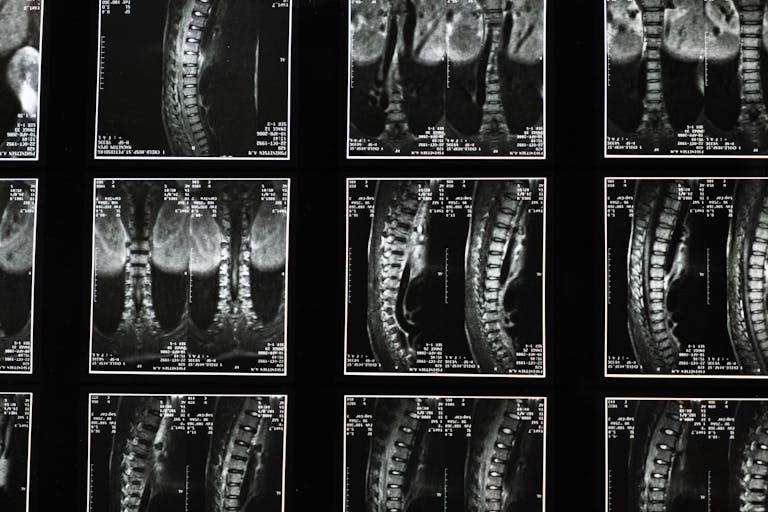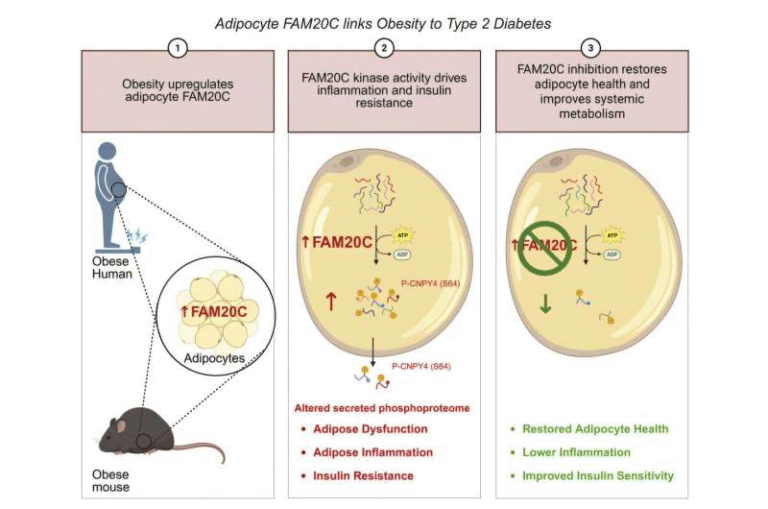Memory Troubles on the Rise: Cognitive Difficulties Nearly Double Among Young Adults in the U.S.

A major new study published in Neurology, the journal of the American Academy of Neurology, has uncovered a worrying trend: self-reported memory and thinking problems have surged across the United States, and the increase is most pronounced among younger adults under 40.
Over the past decade, more people say they’re struggling to remember things, concentrate, or make decisions—signs that could reflect broader shifts in cognitive well-being. The findings, based on millions of survey responses, also highlight deep social and economic divides in brain health.
The Study: A Decade of Data
Researchers analyzed data from more than 4.5 million adults collected through the Behavioral Risk Factor Surveillance System (BRFSS)—a massive ongoing health survey conducted by state health departments and the Centers for Disease Control and Prevention (CDC) between 2013 and 2023.
Participants were asked a single question:
“Because of a physical, mental, or emotional condition, do you have serious difficulty concentrating, remembering, or making decisions?”
Anyone who answered “yes” was classified as having a cognitive disability.
To ensure clarity, the team excluded people who reported depression, since depression can affect memory and focus. They also skipped data from 2020, as the COVID-19 pandemic created unusual disruptions.
What they found paints a sobering picture: overall, the prevalence of self-reported cognitive disability rose from 5.3% in 2013 to 7.4% in 2023. That’s a notable climb in a short period, and the sharpest increases were not in older adults, but in younger ones.
Younger Adults Show the Biggest Jump
The study revealed that adults under 40 saw their rates nearly double—from 5.1% to 9.7% over ten years. This group, typically viewed as being in peak cognitive health, reported the steepest rise in difficulties.
In contrast, older adults aged 70 and above showed a slight decline, from 7.3% to 6.6%.
Adults between 40 and 69 also saw modest increases. For example, those aged 40–54 went from about 4.5% to 6.0%, while adults 55–69 rose from roughly 5.1% to 6.0%.
This reversal—where younger people are reporting more problems than their elders—raises serious questions about what might be happening to modern brain health.
Economic and Educational Divide
The study uncovered clear socioeconomic patterns. Income and education levels were closely linked to the likelihood of reporting cognitive struggles.
- Adults earning under $35,000 per year consistently had the highest prevalence, rising from 8.8% to 12.6% between 2013 and 2023.
- Those earning over $75,000 had much lower rates, increasing only from 1.8% to 3.9%.
Education followed a similar trend:
- Among people without a high school diploma, self-reported cognitive disability rose from 11.1% to 14.3%.
- Among college graduates, the rate increased from 2.1% to 3.6%.
These gaps suggest that social and structural factors—like access to healthcare, stress, job conditions, and community support—play a significant role in cognitive well-being.
Race and Ethnicity Patterns
The researchers also looked at differences across racial and ethnic groups, finding that the pattern of increase was widespread but unequal.
- American Indian and Alaska Native adults had the highest rates overall, rising from 7.5% to 11.2%.
- Hispanic adults went from 6.8% to 9.9%.
- Black adults rose modestly, from 7.3% to 8.2%.
- White adults increased from 4.5% to 6.3%.
- Asian adults showed the lowest prevalence, from 3.9% to 4.8%.
The data clearly indicate that communities already facing structural disadvantages are experiencing the steepest climbs in cognitive difficulties.
Chronic Health and Geography
The team also found links between chronic conditions and cognitive challenges. Adults with stroke, diabetes, or hypertension were far more likely to report problems with memory and decision-making.
For example, among people who had experienced a stroke, around 18% reported cognitive disability in 2023. That’s significantly higher than the national average.
Geographically, the South and Midwest had higher rates than the Northeast and West, suggesting regional health and economic differences might contribute to the pattern.
Why Are Younger Adults Struggling?
It’s easy to assume that age is the main driver of memory or focus issues—but this study flips that assumption. So what could be happening?
Experts point to several possible explanations:
- Increased Awareness – People today are more open about mental health and cognitive problems. With social media and health information everywhere, younger adults might simply be more likely to report issues than before.
- Real Health Changes – The rise could also signal genuine changes in brain health due to modern lifestyles. Chronic stress, digital overload, poor sleep, reduced physical activity, and higher rates of obesity or hypertension can all affect cognitive function.
- Economic and Social Pressures – Younger generations have faced financial instability, high housing costs, student debt, and social uncertainty. Long-term stress and anxiety can lead to concentration and memory issues, especially when combined with inadequate healthcare access.
- Environmental Factors – Air pollution, long working hours, and even excessive screen time are being studied as potential contributors to cognitive fatigue.
While the researchers can’t pinpoint exact causes, they emphasize that the trend is real and measurable—and its potential long-term effects on public health and productivity deserve serious attention.
What the Results Don’t Mean
It’s important to understand that this study does not measure dementia or clinical cognitive impairment. Participants were self-reporting, meaning they simply described their own experiences of mental fog or decision-making trouble.
That makes the data valuable for tracking trends but not for diagnosing individuals. The researchers note that the survey question is broad—it could reflect temporary issues like stress, burnout, anxiety, or fatigue, not necessarily permanent brain damage.
Also, because the BRFSS excludes institutionalized adults (such as those in nursing homes), the data likely underrepresents older adults with severe impairment. Ironically, this might explain why older groups appeared more stable or even improved over time.
Still, even with these caveats, the fact that millions of people are increasingly describing themselves as cognitively impaired points to something larger happening in American life.
The Bigger Picture: Cognitive Health as a Public Health Concern
The researchers behind this study argue that rising self-reported cognitive difficulties should be treated as a public health issue, not just a personal one.
When large numbers of young adults—many in their 20s and 30s—report that they’re struggling to focus or remember things, it raises questions about education systems, workplace culture, and healthcare priorities.
If this pattern continues, it could have far-reaching effects on workforce productivity, mental health, and healthcare costs in the coming decades.
Cognitive decline doesn’t always begin in old age—it can start earlier, shaped by lifelong social, economic, and environmental factors. Recognizing that reality could help societies design interventions that protect brain health long before retirement age.
Understanding Cognitive Function Beyond the Study
Since this study revolves around memory and thinking abilities, it’s worth looking briefly at what science already knows about how cognition works and what affects it.
Cognitive function refers to the brain’s ability to think, learn, remember, and make decisions. It’s influenced by a wide range of factors—genetics, sleep, nutrition, physical activity, stress levels, social interaction, and more.
Sleep deprivation and chronic stress are two of the most common causes of brain fog. The brain uses sleep to consolidate memories and clear waste through the glymphatic system. When people consistently sleep less than seven hours a night, it impairs attention and decision-making.
Exercise is another key player. Physical activity increases blood flow to the brain, encourages new neuron growth, and boosts chemicals like brain-derived neurotrophic factor (BDNF), which supports learning and memory.
Nutrition matters too. Diets rich in fruits, vegetables, omega-3 fatty acids, and whole grains support brain health, while diets high in processed food, added sugars, and saturated fats can hurt it.
Social isolation, another growing issue among young adults, is also linked to cognitive decline. The brain thrives on connection and engagement, and loneliness can dull focus and motivation.
Finally, technology use—especially excessive multitasking or prolonged exposure to screens—has been linked to reduced attention spans and mental fatigue. While not inherently harmful, digital habits can crowd out activities that strengthen the brain, such as reading, exercise, and in-person interaction.
All these factors together could help explain why younger generations today might feel mentally overloaded, even if they aren’t clinically impaired.
Limitations and Next Steps
The authors are careful to point out several limitations in their study.
- The data is self-reported, so it depends on how people interpret and answer the question.
- The BRFSS survey doesn’t capture clinical testing or objective cognitive performance.
- Excluding 2020 means the study doesn’t account for the potential impact of long COVID, which other research has linked to brain fog.
- The question itself is broad and doesn’t specify what “serious difficulty” means, so experiences could range from mild distraction to chronic impairment.
Despite these limitations, the size of the dataset—over 4.5 million responses—makes the trends statistically solid. Researchers hope these findings will encourage further studies to explore causes, track objective cognitive measures, and test interventions that could protect brain health at younger ages.
The Bottom Line
Over ten years, self-reported cognitive problems among U.S. adults rose sharply, from 5.3% to 7.4%. The biggest jump was among adults under 40, where rates nearly doubled.
Lower income, lower education, and racial/ethnic minority groups reported the highest rates, suggesting that inequality and chronic stress are deeply intertwined with brain health.
Even though these results don’t mean a surge in dementia, they show that millions of Americans feel mentally foggier than before, and that’s something worth paying attention to.
The study’s authors urge further research into how social, economic, and environmental pressures might be shaping this trend—and what can be done to reverse it.





